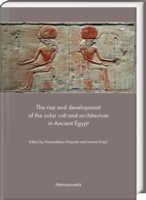|
weitere Titel zum Thema:
Download:
Bitte beachten Sie: Mit digitalen Produkten in Ihrem Warenkorb
wird die Bezahlung nur per PayPal möglich. Der Download dieser Produkte wird bereitgestellt, wenn die Bezahlung bestätigt ist. This volume joins together the proceedings of the three workshops held in Prague on December 15, 2017, December 10, 2018 and June 25–26, 2019, within the framework of the research project ( The rise and development of the solar cult and architecture in Third Millennium BC Egypt) launched in 2017 at the Czech Institute of Egyptology – Charles University, Prague, under the auspices of the Czech Science Foundation – Grant Agency of the Czech Republic. The key aim of the project was to contribute to the study of the dynamics of development and featuring of the sun cult in ancient Egypt, as well as of the evolution of some related topics, such as royal ideology and funerary texts. The contributions span all periods of ancient Egyptian history and bring together scholars dealing with diverse geographic areas, from the capital site of Memphis, with its huge necropolis, to the southernmost and liminal area of Elephantine. Previously unpublished data are also presented in the volume, including new research on the Palermo Stone and the royal annals; results of latest archaeological campaigns in Abusir, Dahshur and Heliopolis; and new analyses of the Pyramid Texts and their reappropriation and renegotiation in later phases of Egyptian history.
|
|||||||||||||||||||||||||||||||||||||






